Featured Comment:
“Used your recipe today and it turned out a treat. It was Yummomura 🙂”
– Wolfgang
What is Beef Tataki?
Beef tataki (or “gyuniku no tataki” 牛肉のたたき in Japanese) is a Japanese dish made with fillet of beef that has been seasoned, seared over a high heat, cooled and cut into thin slices. It is most commonly served either soaked in a marinade or with a soy based dipping sauce and sprinkled with green onions.
While it looks somewhat similar to roast beef, the cooking method and serving style is vastly different. Due to the quick searing, the inside is mostly raw/rare and its melt-in-the-mouth texture can be compared to that of sashimi. Besides beef, “katsuo no tataki” made with bonito is also famous, and actually more popular than beef in Japan.
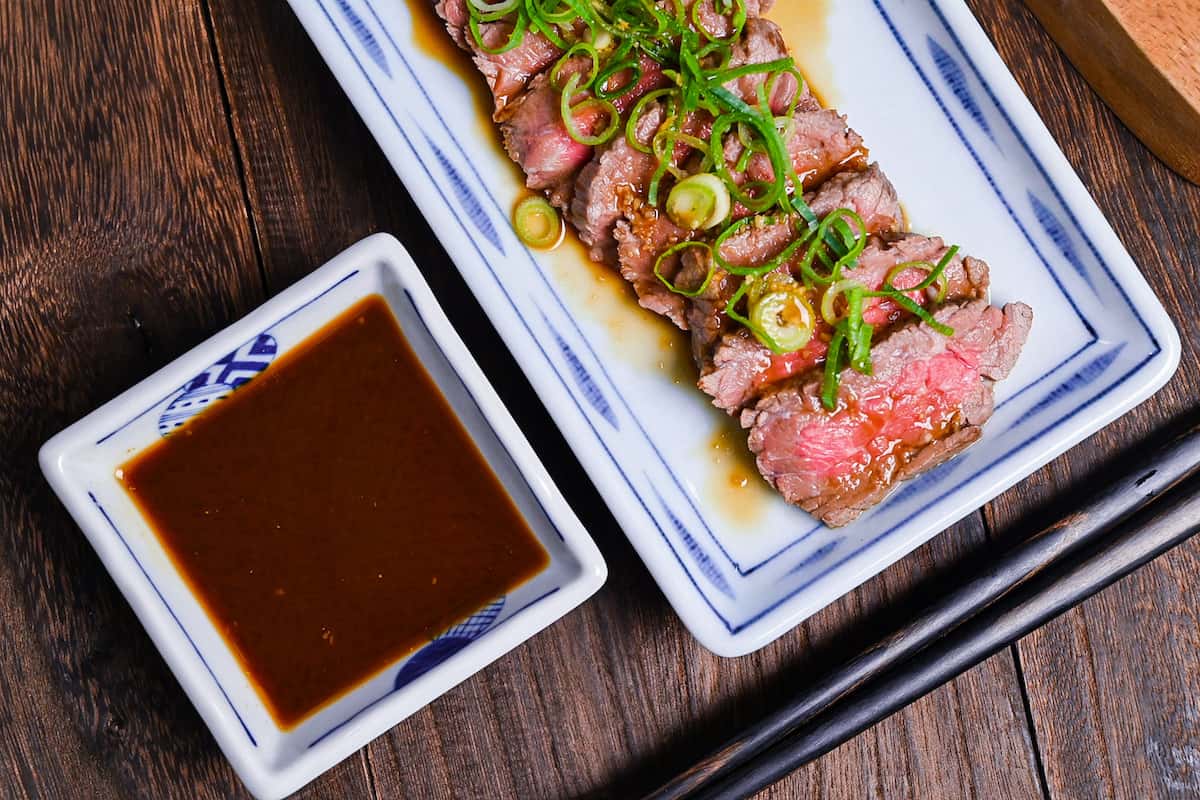
Key Ingredients You Will Need
- Fillet of beef – As mentioned, rounds or rumps would be great options, preferably use a lean block of beef without too much fat or connective tissues.
- Garlic paste – You can grate garlic yourself or you can use premade garlic paste as a shortcut.
- Black pepper – White pepper can also be used instead depending on your preference.
- Cooking oil – Any unflavored oil will do.
- Soy sauce – For brand recommendations, check out my soy sauce guide!
- Mirin – It is recommended to look for “hon mirin” (本みりん) for the best flavor.
- Sake – If you do not have it, substitute white wine or dry sherry.
- Wasabi – You can grate wasabi yourself, but wasabi paste is more than good enough in this recipe.
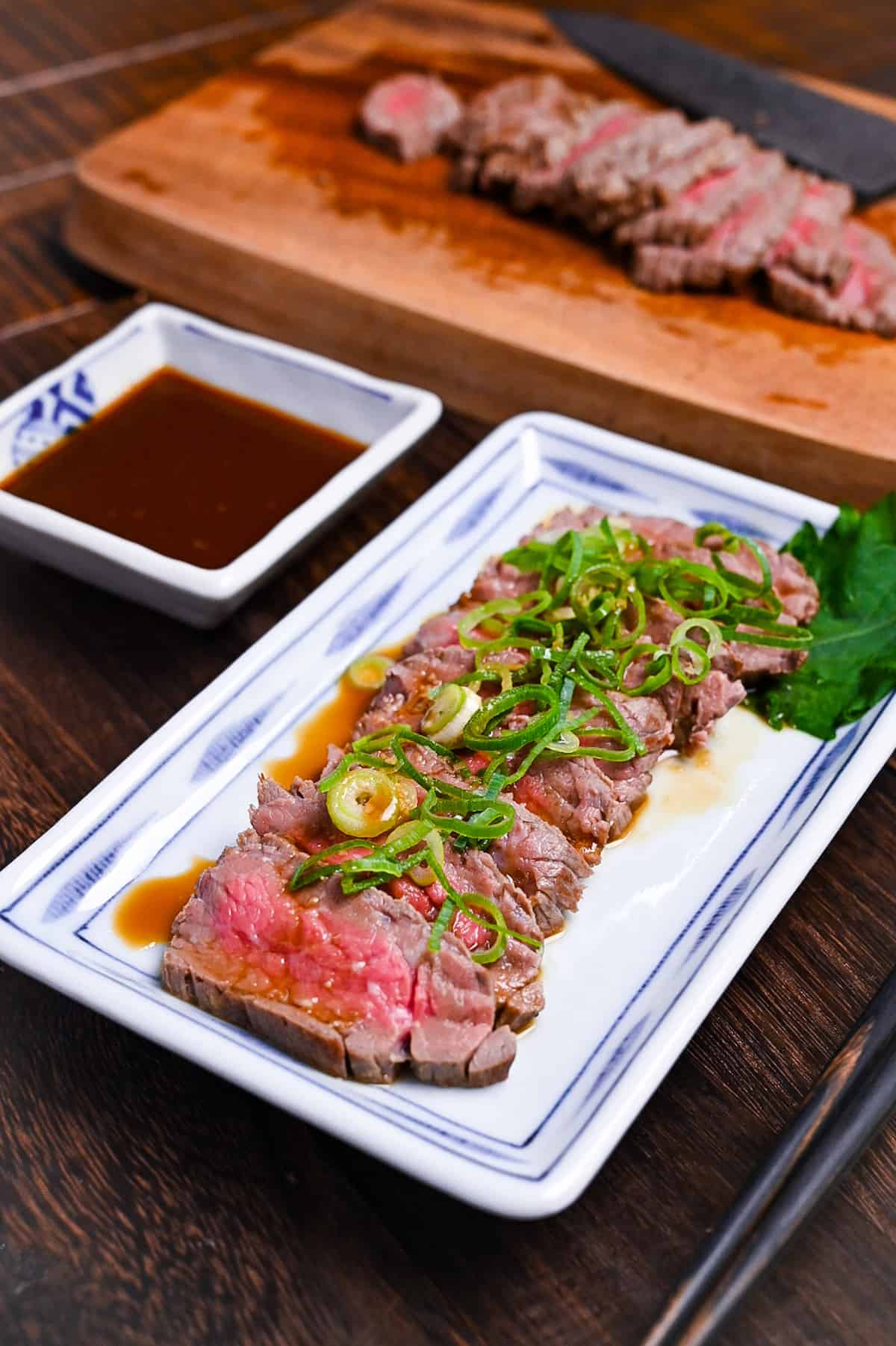
Visual Walkthrough & Tips
Here are my step-by-step instructions for how to make Beef Tataki at home. For ingredient quantities and simplified instructions, scroll down for the Printable Recipe Card below.
Take your beef fillet and pierce it all over with a clean fork. This will tenderize the meat and help the seasonings travel deeper.
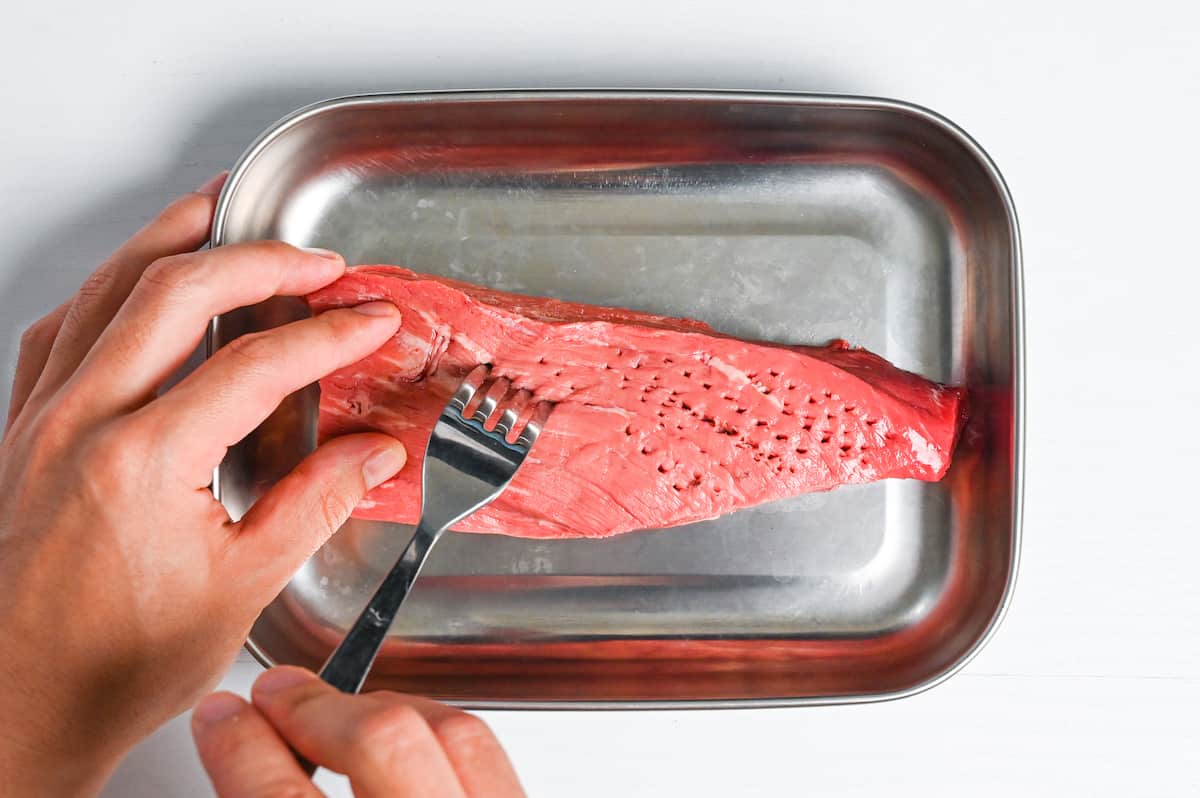
Sprinkle with salt and pepper, then rub the garlic paste all over the surface. Cover and allow the fillet to come to room temperature.
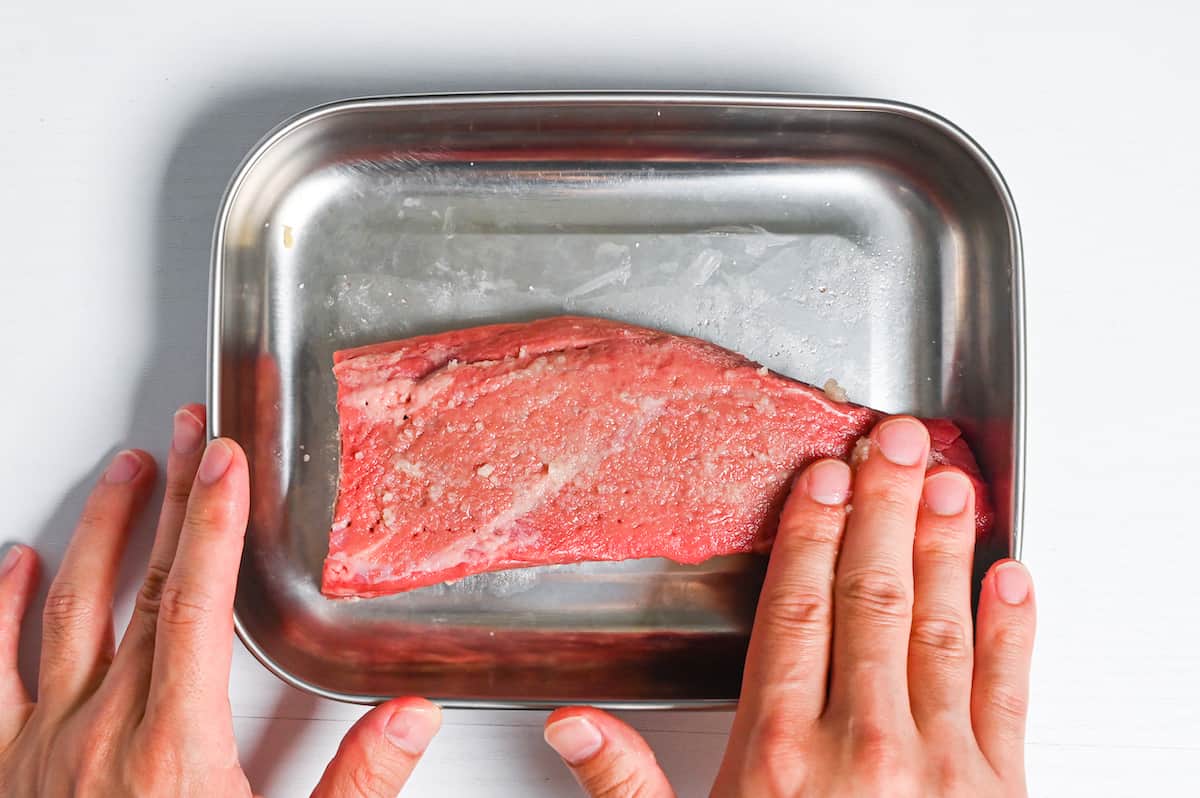
Preheat your pan on high. I recommend using cast iron for a beautiful even brown sear, they also retain heat better for the resting period later.
Once hot, add the oil and place the fillet in the pan.
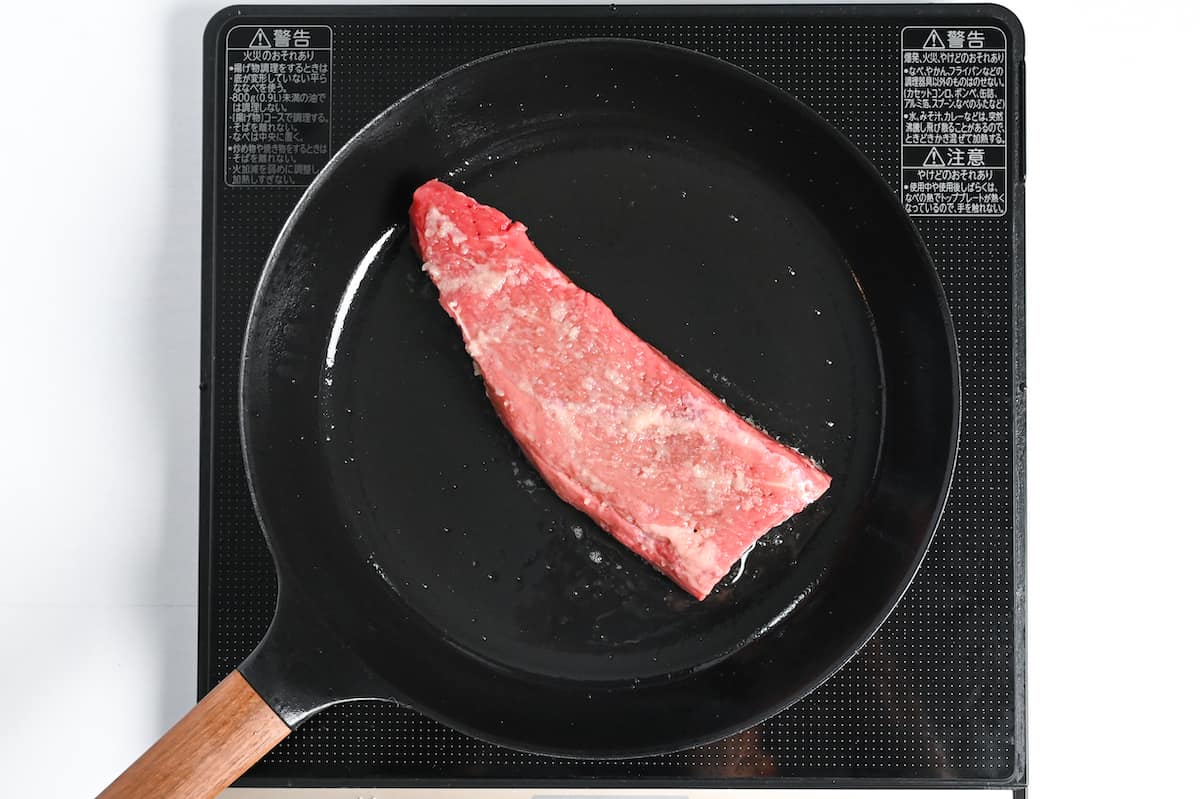
Fry for about 30-45 seconds on each side to seal the surface.
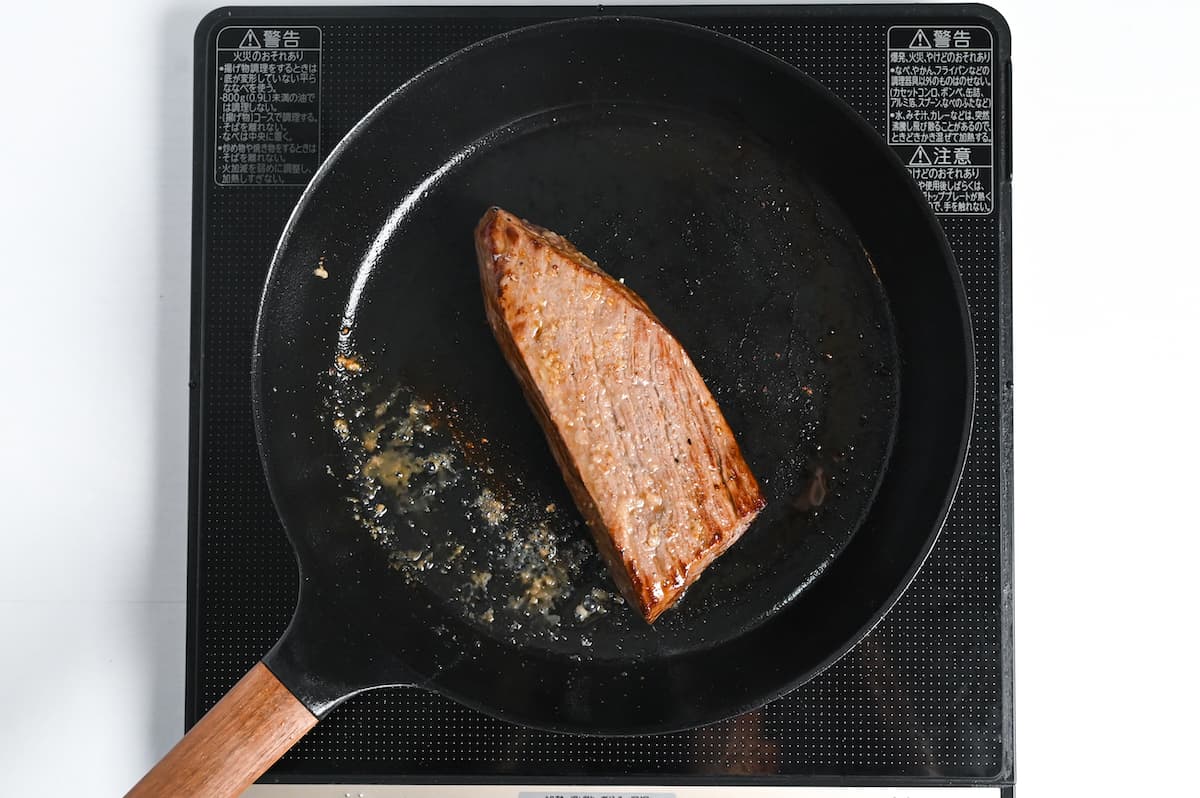
Once sealed, turn off the heat, wrap the meat with foil and rest it in the warm pan for 15 minutes.
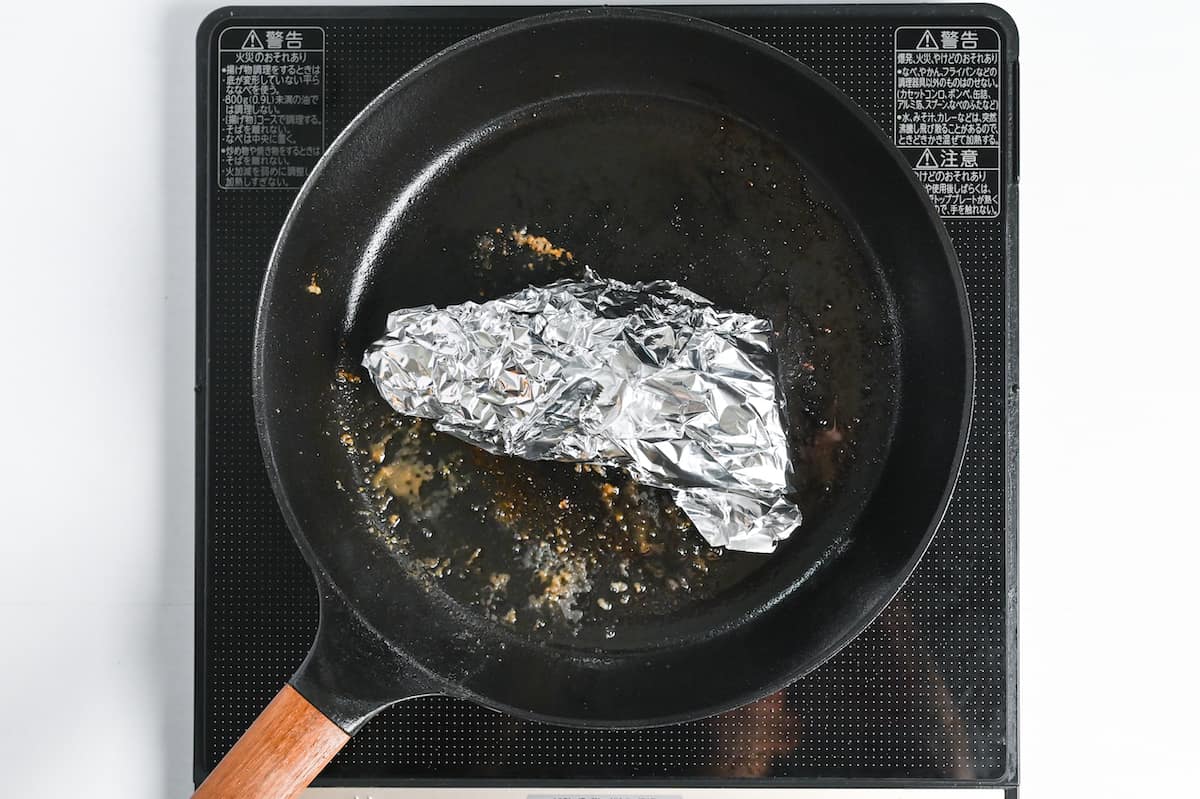
Pour the sake and mirin into a small saucepan and allow it to boil for 1-2 minutes to burn off the alcohol. Pour it into a small, heatproof bowl.

Add soy sauce and wasabi to the bowl and whisk until smooth. Store in the fridge until time to serve.

Once the beef has finished resting, use a clean, sharp knife to cut it into thin slices. Arrange the slices on a plate, drizzle with sauce and top with chopped green onions.
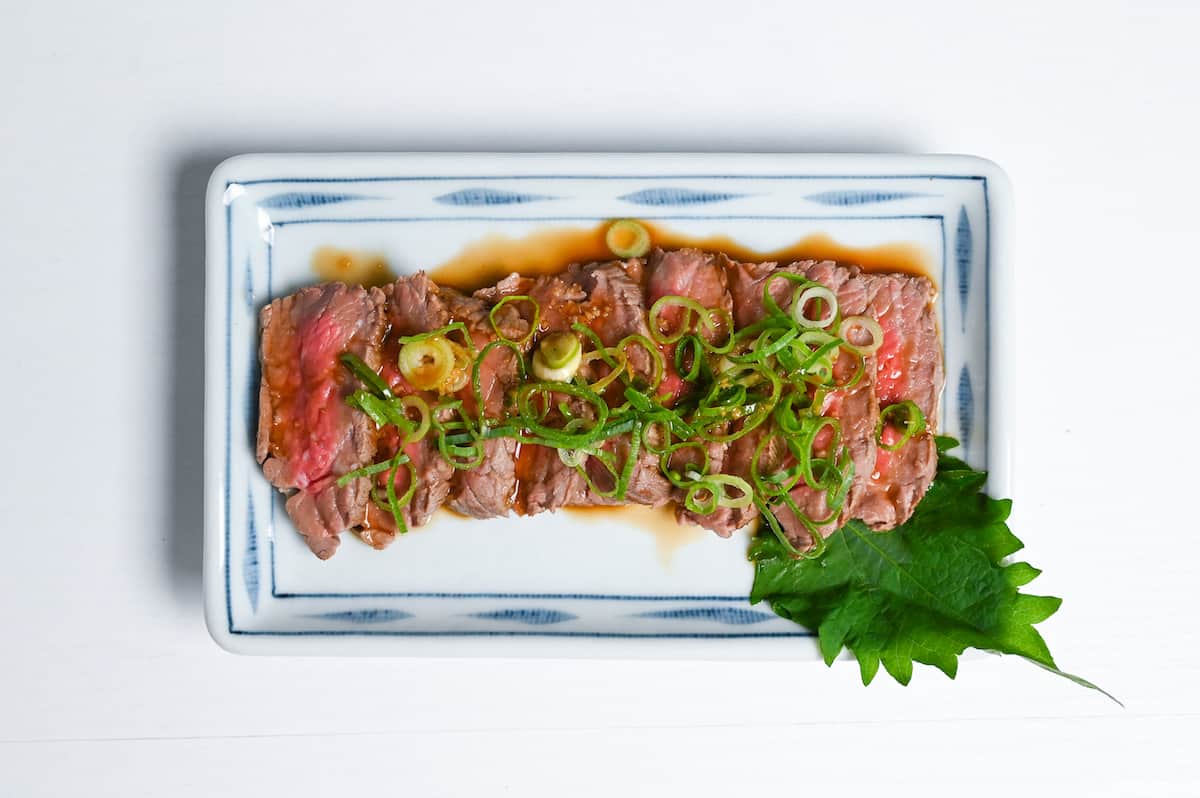
Enjoy!
Jump to Full Recipe MeasurementsHow to Store
Beef tataki is basically cooked only on the outside and most of the inside is rare or even raw, so it is important to eat it the same day it is cooked, even if it is stored in the refrigerator.
At the latest, it should be stored in the refrigerator and eaten within 24 hours. If you choose to refrigerate, store it in block form and cut with a clean knife right before serving to avoid bacterial growth.

FAQ
Tataki (たたき) is a term linked with the distinct culinary practices of Japan. In its earliest use, “tataki”, which means beating or bashing in Japanese, denoted a specific preparation technique in which ingredients were physically crushed or mashed, either by hand or using a knife. This procedure was implemented to thoroughly infuse the ingredients with an array of seasonings, thereby enhancing their natural flavors.
In recent times, however, the interpretation of “tataki” has changed significantly. It is now frequently associated with dishes featuring blocks of fish or beef that are seasoned and expertly seared over charcoal or grilled on a hot plate. Once seared, the block is promptly cooled, thinly sliced, and served accompanied with a selection of condiments and seasonings.
As for the etymology of “tataki,” one prevailing theory suggests that the term originated from the practice of pre-salting fish meat and then physically beating it either with the side of a knife or the palm. Another hypothesis proposes that “tataki” might have stemmed from the tradition of sprinkling condiments on grilled food and patting them in with either the hand or the back of a knife.
In beef tataki, fillet of beef with little fat or muscle fibers is used in order to achieve a soft, melt-in-mouth texture.
Indeed, beef tataki and roast beef may appear similar at first glance, primarily due to their use of fillet of beef, which distinguishes them from dishes like steaks. However, upon a closer look, these two dishes reveal unique cooking techniques and cultural influences that make them fundamentally different.
Roast beef, a classic of English cuisine, is prepared by slow-cooking a block of beef in the oven. This method allows the meat to develop a deliciously browned surface with a beautiful rose-colored interior, contributing to its iconic presentation.
On the other hand, beef tataki follows a contrasting culinary philosophy. It involves searing the surface of the beef in a frying pan or pot while keeping the inside essentially raw. This technique results in a completely different texture and flavor profile compared to roast beef.
These dishes also diverge significantly in their seasoning approach. While roast beef typically incorporates herbs, salt, and pepper during the cooking process and is often served with a gravy made from the meat’s juices, beef tataki opts for a distinctly Japanese palette of flavors. It is typically served with soy sauce, ponzu sauce, or a soy sauce-based sauce, akin to sashimi, further emphasizing its Japanese culinary roots.
In conclusion, while beef tataki and roast beef may share the use of beef chunks, the cooking methods, timings, and seasonings employed result in two distinctively different, yet equally delicious dishes.
When it comes to Japanese beef dishes, you might associate them with Wagyu beef. However, it is not necessary to use Wagyu for Tataki (although of course, you can if you like).
You can make beef tataki with the same blocks of beef that you use for roast beef at home. In fact, I used Angus beef round in making this recipe.
And to be more specific, beef tataki is often made with particularly lean cuts of meat, with rounds and rumps being the most commonly used cuts.
Yes, in a sense. Beef tataki is prepared by briefly searing the exterior of the beef, leaving the inside largely raw, akin to a thinly sliced rare steak. The speedy searing seals in the flavors while preserving the meat’s freshness. However, it’s important to use high-quality, fresh beef for both taste and safety.
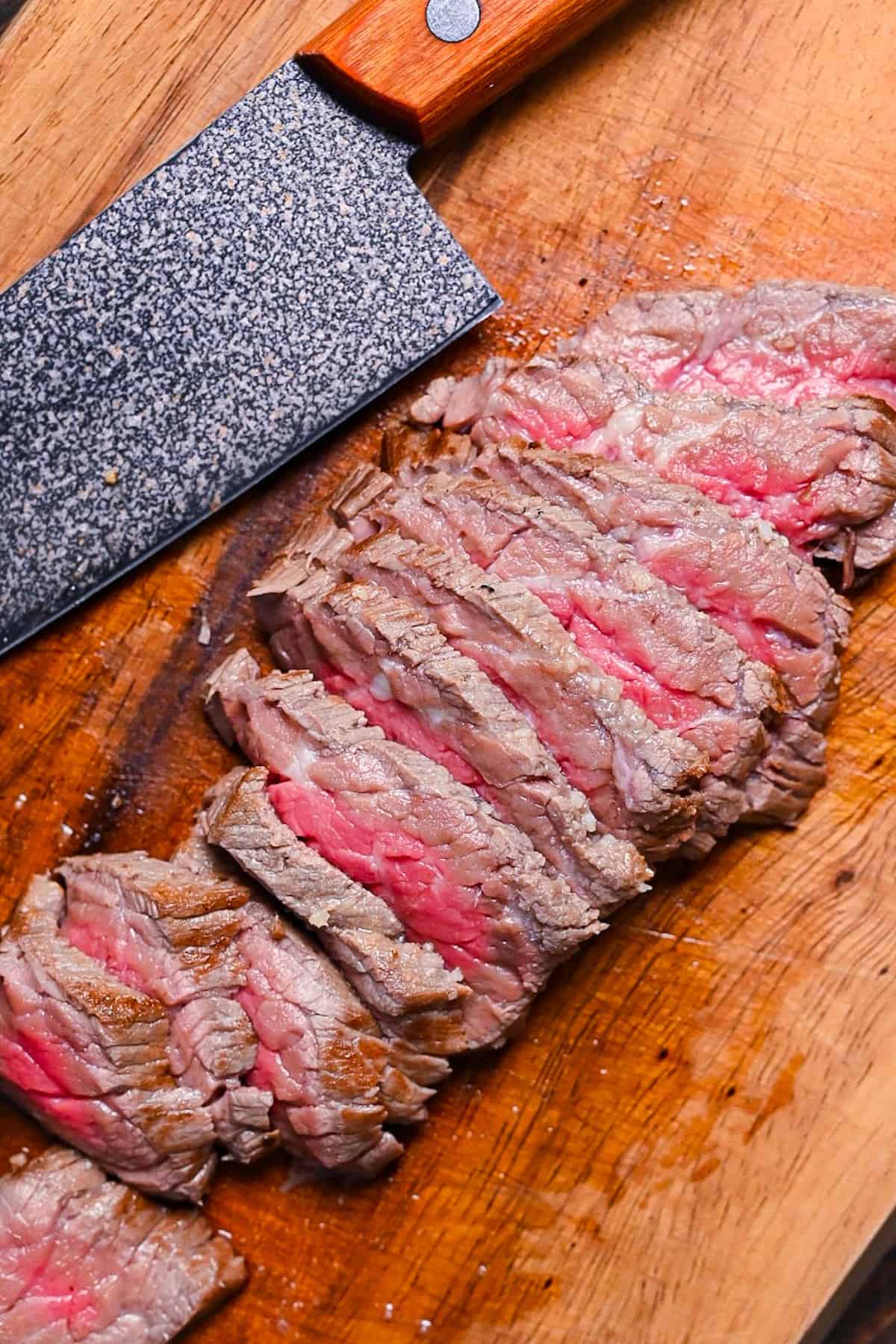
I hope you enjoy this Beef Tataki recipe! If you try it out, I’d really appreciate it if you could spare a moment to let me know what you thought by giving a review and star rating in the comments below. It’s also helpful to share any adjustments you made to the recipe with our other readers. Thank you!
More Japanese Appetizers
- Agedashi Tofu (Japanese Deep Fried Tofu)
- Japanese Potato Salad (Izakaya Style)
- Authentic Chicken Karaage (Crispy Japanese Fried Chicken)
- Addictive Izakaya Style Salted Cabbage (Yamitsuki Shio Cabbage)
Want more inspiration? Explore my Appetizer Recipe Roundup Post for a carefully selected collection of tasty appetizer recipe ideas to spark your next meal!
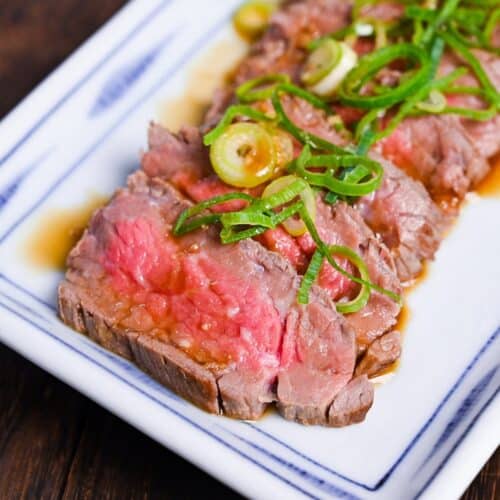
Beef Tataki (Japanese Seared Beef Fillet)
Equipment
Ingredients
- 300 g fillet of beef
- ¼ tsp salt
- ⅛ tsp ground black pepper
- ½ tbsp garlic paste or grated clove
- ½ tbsp cooking oil neutral flavor with high smoke point
- 1 tbsp finely chopped green onions
Sauce
- ½ tbsp sake
- 1 tbsp mirin
- ½ tbsp Japanese soy sauce (koikuchi shoyu)
- ½ tsp wasabi paste
Instructions
- Place the 300 g fillet of beef in a container and stab it thoroughly all over with a clean fork.300 g fillet of beef

- Sprinkle with ¼ tsp salt and ⅛ tsp ground black pepper and rub the ½ tbsp garlic paste evenly over the surface. Cover and bring to room temperature.¼ tsp salt, ⅛ tsp ground black pepper, ½ tbsp garlic paste

- Once the beef reaches room temperature, heat an iron skillet on high. Once hot, add the oil and place the beef fillet in the pan.½ tbsp cooking oil

- Fry for about 30-45 seconds on each side.

- Once sealed all over, turn off the heat. Wrap the meat in foil and place it back in the pan to rest in the residual heat for 15 minutes.

- While the beef is resting, heat the ½ tbsp sake and 1 tbsp mirin in a saucepan and boil for 1-2 minutes to burn off the alcohol. Pour into a heatproof bowl.½ tbsp sake, 1 tbsp mirin

- Add ½ tbsp Japanese soy sauce (koikuchi shoyu) and ½ tsp wasabi paste to the bowl and whisk until combined. Store in the fridge until serving time.½ tbsp Japanese soy sauce (koikuchi shoyu), ½ tsp wasabi paste

- Once the beef has finished resting, use a clean, sharp knife to cut it into thin slices. Lay the slices on a plate and drizzle with the sauce. Top with chopped green onions and enjoy!1 tbsp finely chopped green onions

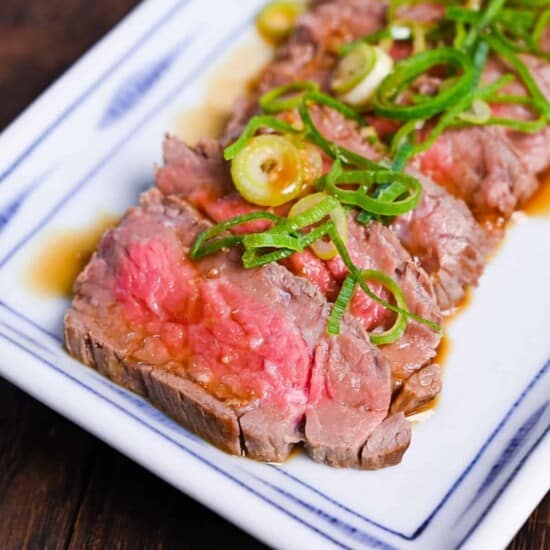


Thank you Yuto,
Used your recipe today and it turned out a treat.
It was Yummomura 🙂
Best wishes, Wolfgang
Hi Wolfgang,
Thank you for the comment! I’m glad you enjoyed the recipe!
Yuto